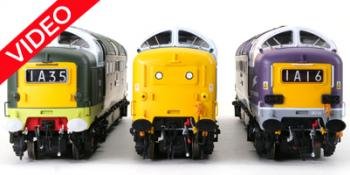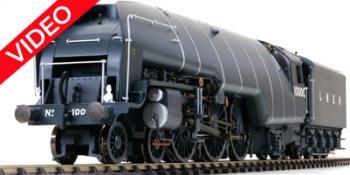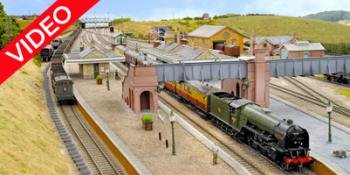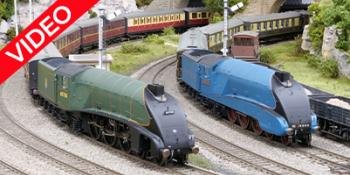The Crewe-built Class 91 Bo-Bo AC electrics have been a daily part of the East Coast Main Line scene since 1988, and they are still in front line service today. Hornby has gone back to the drawing board to create a brand-new model for ‘OO’. MIKE WILD finds out more.
THE YEAR 1988 was exciting for the East Coast Main Line. A new form of traction arrived in the shape of the Class 91 AC electrics. With 6,480hp on tap, a new body shape to go with matching rakes of all-new BR Mk 4 carriages and a maximum speed of 140mph, they were set to revolutionise travel on the London-Edinburgh corridor which they certainly did.
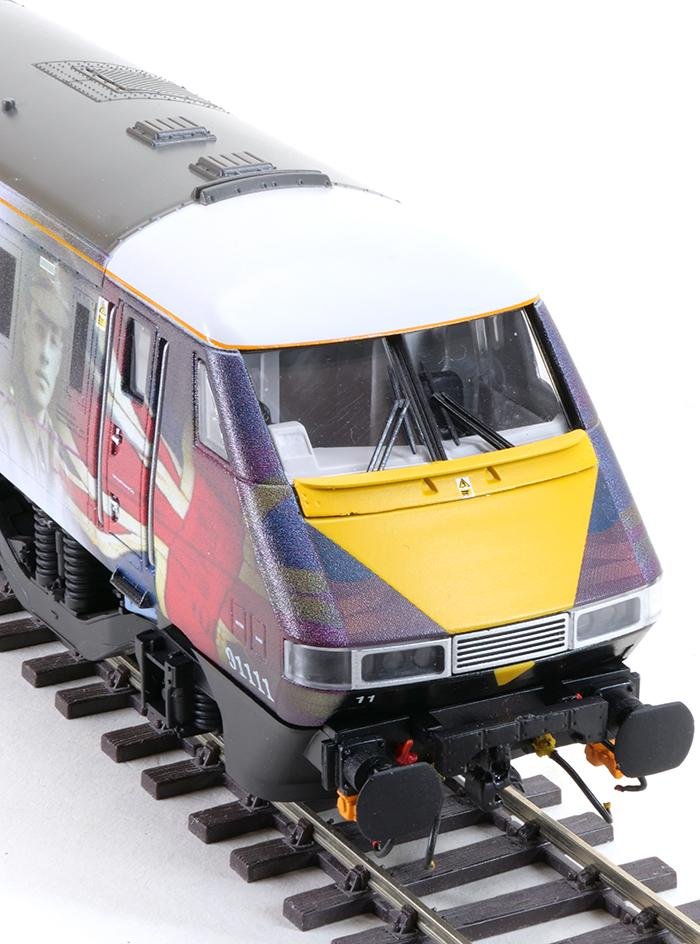
In the same year as the real locomotive’s arrival, Hornby revealed it was working on a ‘OO’ gauge model of the class in its 34th annual catalogue. That model was of its era with a single motor bogie, large tension lock couplings and a plastic chassis. It stayed with the Hornby catalogue until the mid-2010s, at which point it was withdrawn paving the way for a new version of these high-profile East Coast express locomotives.
The Hornby 2020 catalogue came with the exciting announcement of an all-new Class 91 for ‘OO’ and the first version, 91111 For the Fallen (Cat No. R3892), arrived with retailers during April. Interestingly, Hornby has upgraded the specification for its Class 91 during development with the finished models now featuring a 21-pin decoder socket and additional switchable lighting on DCC systems.

Above: The For the Fallen livery is a combination of paint and printing techniques.
The real locomotives are still in service today with a handful being retained by LNER, potentially until 2024, to work alongside the Class 800 series trains on the London-Leeds corridor. You can read more about the Class 91s in Reality Check here.
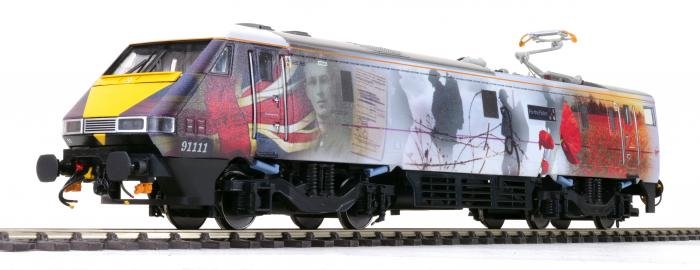
Above: The first of Hornby’s all-new ‘OO’ Class 91s to arrive is 91111 For the Fallen in its striking artwork livery.
THE MODEL
Hornby has six versions of the Class 91 on the way – four arriving in spring 2022 and two for spring 2023 which were announced in its 2022 catalogue. The first batch are the locomotives announced in the 2020 catalogue modelling 91002 Durham Cathedral in original InterCity colours (R3890) together with 91118 The Fusiliers in LNER red and white (R3891), 91111 For the Fallen in its unique Virgin branded First World War commemorative livery (R3892 – our review model) and 91117 Cancer Research UK in GNER blue with gold lettering (R3893). These will be joined in 2023 by models of 91101 Flying Scotsman in its Flying Scotsman branded colour scheme (R30165) as well as 91110 Battle of Britain Memorial Flight in its special livery (R30166).
Our review sample of 91111 For the Fallen features the striking artwork applied to the locomotive in October 2014. The real locomotive started life as 91011 and was completed in February 1990. It was named Terence Cuneo during its InterCity liveried period. It is still in service today with LNER as one of the ten remaining active on the East Coast Main Line.
The livery uses a combination of painting and printing techniques to replicate the complex artwork and colour scheme. The yellow panels, roof and underframe are all painted and have a smooth and crisp finish while the side artwork is printed over the top and looks superb. It has a very slightly textured finish, but you won’t notice when the model is in action.

Above: The pantograph can be raised or lowered manually.
The bodyshell mirrors the shaping and proportions of the Class 91 superbly with separately fitted handrails at the doors, neatly moulded light clusters front and rear and a combination of moulded grilles on the bodyside and etched parts on the roof. The light clusters at the front of the locomotive have an etched metal silver trim which 91111 did run with during 2021 (prior to that the light surround was black), although the outer clear corners should be black in this form –a simple fix.
NEM coupling pockets are fitted to the model front and rear allowing the Class 91 to be used ‘blunt end’ first as well as with the raked end leading as they were most of the time. However, the NEM coupling pocket at the raked end does protrude through the lower fairing and is quite prominent once the coupling has been removed. To combat this, we removed the coupling mount altogether on our sample to see how it would look once the optional brake pipes had been fitted which certainly improved its looks, though the opening became clear. A fill-in plate or alternative lower valance to fit in place of the coupling would have been a nice touch.
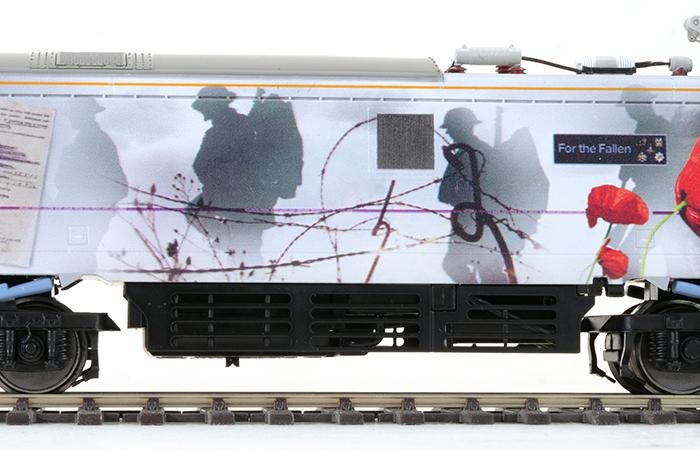
Above: The underframe equipment is modelled in full relief including the openings in the side fairings.
Moving back to the good, and the bogies and underframe are all neatly detailed with the central components moulded in full relief while the side valances have cutouts to allow a clear view through to the air tanks inside.
On the roof the pantograph is a Brecknell Willis high-speed design, near identical to the Class 87 pantograph, which is posable for those with overhead wires, but not sprung. To our eyes it looks the part and the design also means that it is close to scale as well.
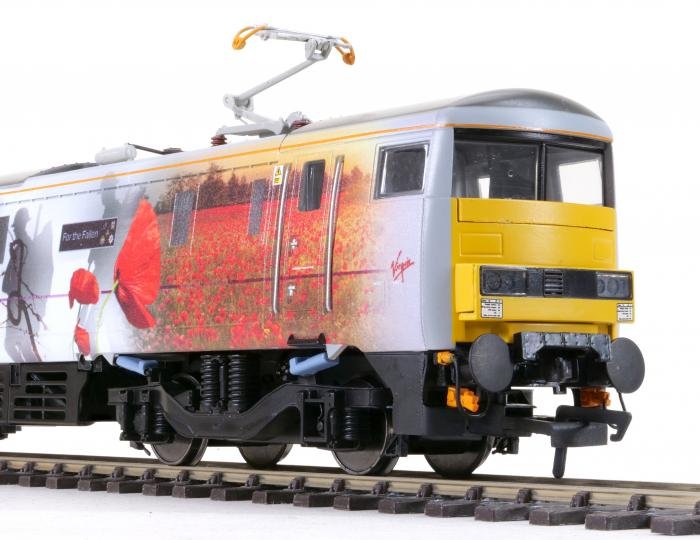
Above: The ‘blunt end’ of the Class 91 is finely modelled.
PERFORMANCE
The old Hornby Class 91 had a basic mechanism by modern standards, but this new version puts all that behind it. Inside Hornby has put together what we expect –a heavy die-cast chassis which contains a powerful five-pole motor which drives all four axles through twin brass flywheels and cardan shafts.
The mechanism gives the Class 91 plenty of capacity to haul a scale length train of nine Mk 4s and a Driving Van Trailer (DVT). We tested our sample with current Hornby Mk 3s as well as the previous generation of Mk 4 trailers and DVT as the full set of new Mk 4 coaches are due to arrive later this year.
The motor was smooth running and quiet throughout our tests and negotiated second radius curves as well as a range of points and crossings.

The Class 91 comes with a 21-pin DCC decoder socket which Hornby has used to expand the range of lighting functions which can be controlled individually. Built into the model is the option to switch between day and night modes using the switch in the underside of the chassis while the circuit board has been configured so that F0 only turns the white headlights on, F21 turns the headlights and cab lights on and F22 turns the headlights, taillights and cab lights on using Hornby’s own 21-pin decoder (R7382). However, our tests with other decoder brands indicated that this function map doesn’t work with all chips.
OVERALL
The East Coast Main Line’s primary motive power of the last three decades has been desperately in need of a new and upgraded model and it is great to see the Class 91 being revived in the Hornby range with a new tooling.
The modern mechanism, striking liveries and additional lighting functions make this an attractive product and one which we think will be popular with the current increased AC electric traction modelling. Having put 91111 through its paces, we definitely want to add one of these fine models to our own collection. The hard part is choosing which one! (MW)
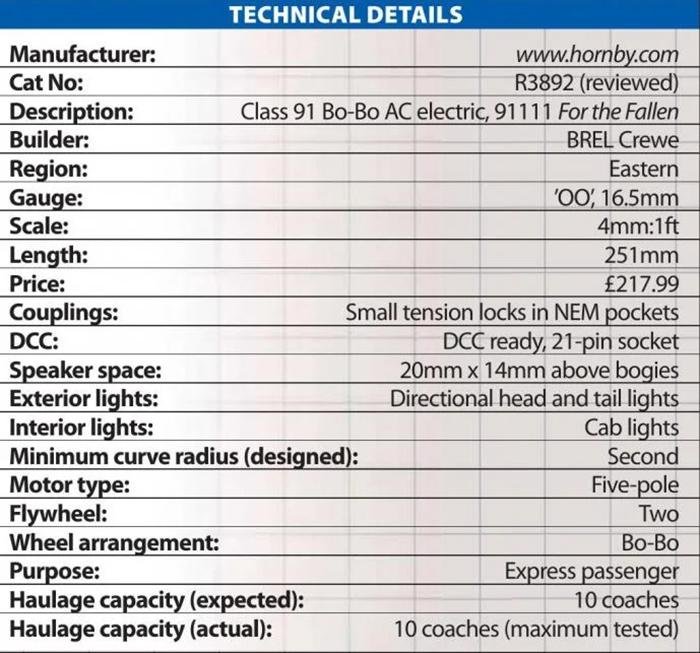
Above: In profile the Hornby Class 91 looks the part. The pantograph is posable.
